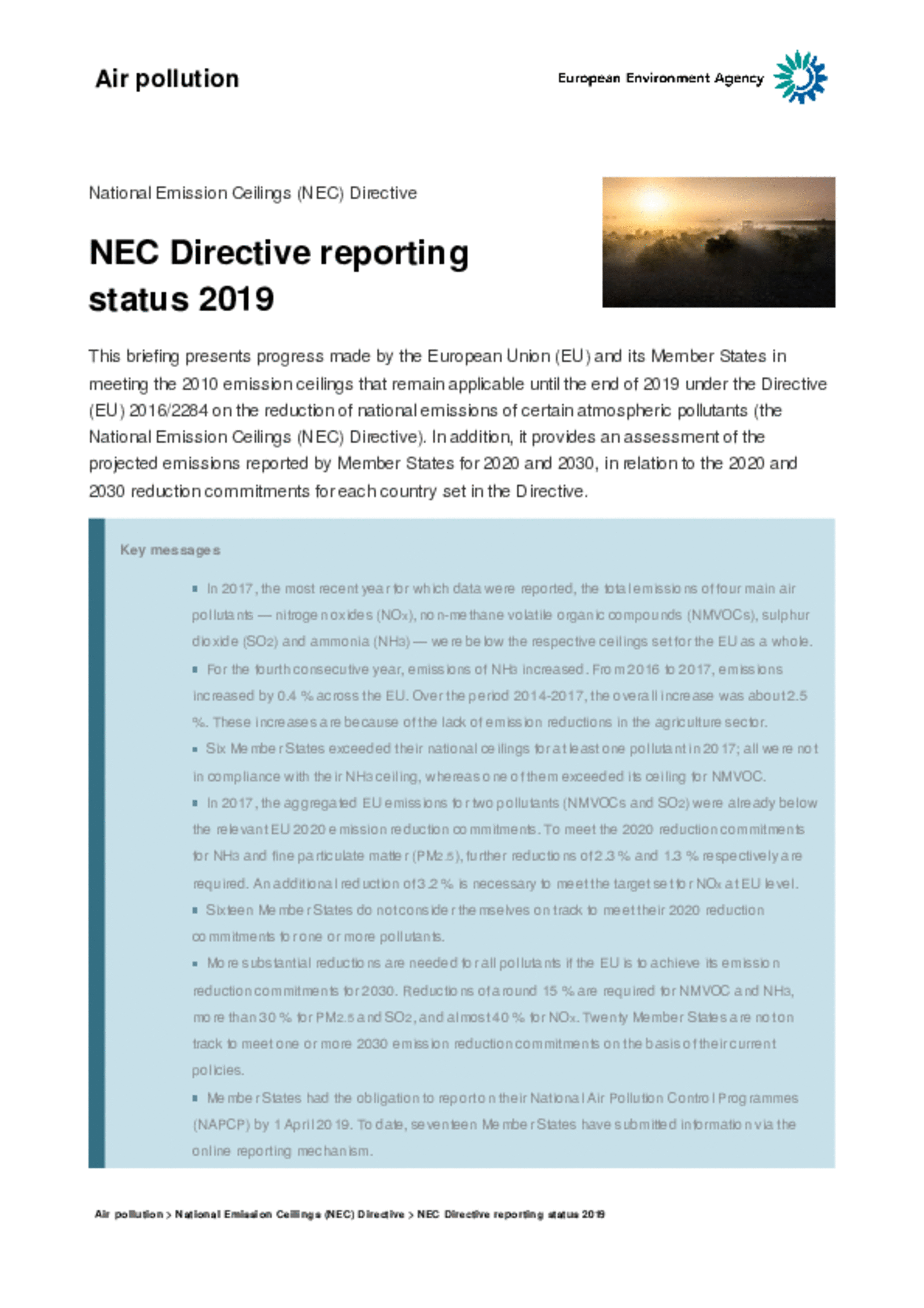All official European Union website addresses are in the europa.eu domain.
See all EU institutions and bodiesBriefing 2/2019
This briefing presents progress made by the European Union (EU) and its Member States in meeting the 2010 emission ceilings that remain applicable until the end of 2019 under the Directive (EU) 2016/2284 on the reduction of national emissions of certain atmospheric pollutants (the National Emission Ceilings (NEC) Directive). In addition, it provides an assessment of the projected emissions reported by Member States for 2020 and 2030, in relation to the 2020 and 2030 reduction commitments for each country set in the Directive.
ISBN: 978-92-9480-077-0

